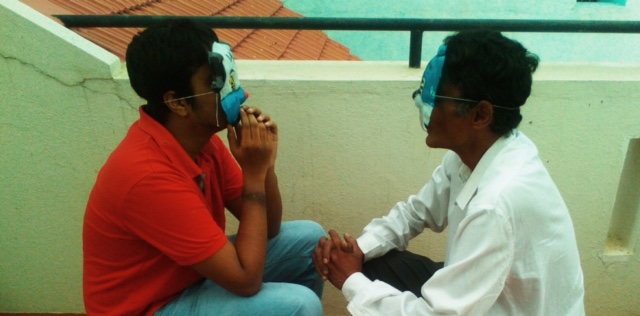
Linish, who has Asperger’s Syndrome, lauds the Drama for Autism course conducted by Dr. Parasuram Ramamoorthi’s organization, Velvi, and stresses the benefits of theatre for improving social competence in people with autism spectrum disorders.
When I was leaving my Drama school without finishing my Masters in Theatre Arts, my Professor Shibu S Kottaram asked, “Why don’t you go and meet Dr. Parasuram Ramamoorthi? He is a well-known theatre person who is working with individuals with Autism. He stays in Madurai.” There were lot of political and personal conflicts between us, so I didn’t take my teacher’s words seriously. That time I didn’t know what Autism was. I knew I was different from others, but I was unaware that I too was autistic. My teacher, who had a son with intellectual disability, might have recognised my problems.
After 3 years, I joined the Spastic Society of Karnataka for Diploma in Autism approved by Rehabilitation Council of India (RCI). I was diagnosed with Asperger’s Syndrome (an autism spectrum disorder) at the age of 33. While I was doing my diploma course I chanced upon Ramamoorthi Sir on Facebook. After a month, we met personally for the first time at Indian Inclusion Summit -2014, but he didn’t recognize me.
Subsequently, we started to chat often on Facebook. We shared each other’s thoughts and views, and we became very close. For me, a drama school dropout, interactions with Ramamoorthi Sir offered me a new opening and opportunity to come back to theatre again. Then, in October 2015, my friends Shobha, Gopala and I joined the Drama for Autism course which is conducted by his organization called Velvi. In fact, a new door was opening before me to understand one of the most effective applications of theatre.
I would like to share in brief what I experienced and understood during the Drama for Autism course, though I am no expert. There was therapy through drama based on the belief that art is communication. In order, for a student with ASD (autism spectrum disorders) to learn to communicate using theatre, the following four components of drama aid the individual through the therapeutic process:
- Performance
- Projection
- Narrative
- Improvisation
With performance, the therapist is able to determine if the individual is working with others, cooperating, and committed to the performance. So, we began with the aim to teach children/young adults with ASD core skills by pairing them with a neurotypical individual as a model during a theatre process. Soon, children started to show an increase in the ability to recognize facial expressions.
Projection includes the different ways the individual communicates, such as using masks, puppets, written stories, role play, etc. When one is not able to directly express themselves, these mediums help the individual access a different form of communication. Most of the individuals with ASD have the difficulty to plan and prepare for the social situations and events. The techniques like rehearsed response and role play will help them to prepare for social situations. And each child with ASD has his/her own way to communicate. So using different modes of projection will help them.
The narrative, or the content of any story used during the process, allows the individual to take on roles in order to learn from other characters. The plot, the lessons, and the characters that go into these narratives allow individuals to connect with their problem indirectly, working and solving through the fictional work. This theme of using theatre to help build communication skills is directly applicable to those with autism who struggle with expressing emotions. Students with ASDs have trouble communicating emotions, and by giving them a character to transform into, they can learn how other people feel and behave by becoming that character themselves.
Improvisation skills are not that easy for individuals with ASD like other neorotypical people, because to act in an unknown situation, without any preparation, is very difficult for them. Improvisation in drama therapy begins with warm ups (exercises and games) in order to help everyone prepare for the session. But, one of the most important lessons to take away from improvisational work is the ability to be flexible and adaptive. So, when an ASD individual can apply this ability to real life situations, the result can be invaluable.
Apart from all these, the Drama for Autism course was particularly helpful to understand about sensory integration through theatre. Most children with ASD struggle with sensory issues. Hence, while doing drama with them we should know about their sensory problems and how to handle them. A sensory friendly environment is very important to practice drama for ASD children. Theatre will help to introduce sounds, lights, textures and colours in different intensity and type to children with ASD.

I saw children, who participated with us in this course, had target behaviour to work and focus on throughout. I saw them struggle to grasp new concepts and stretch their physical and emotional boundaries. I think that drama therapy has the potential to reach many more children with ASDs and to continue helping those who have been through the program. Thank you so much Dr. Parasuram Ramamoorthi for giving an opportunity to learn by conducting this course. And, I remember with sincere gratitude the effective guidance of my tutor Heidi Qandah , the great support from my friend Shobha, the children (Pritesh and Sairam) who participated in the course and their parents. I wish each one the very best in all of Velvi’s future endeavours.






